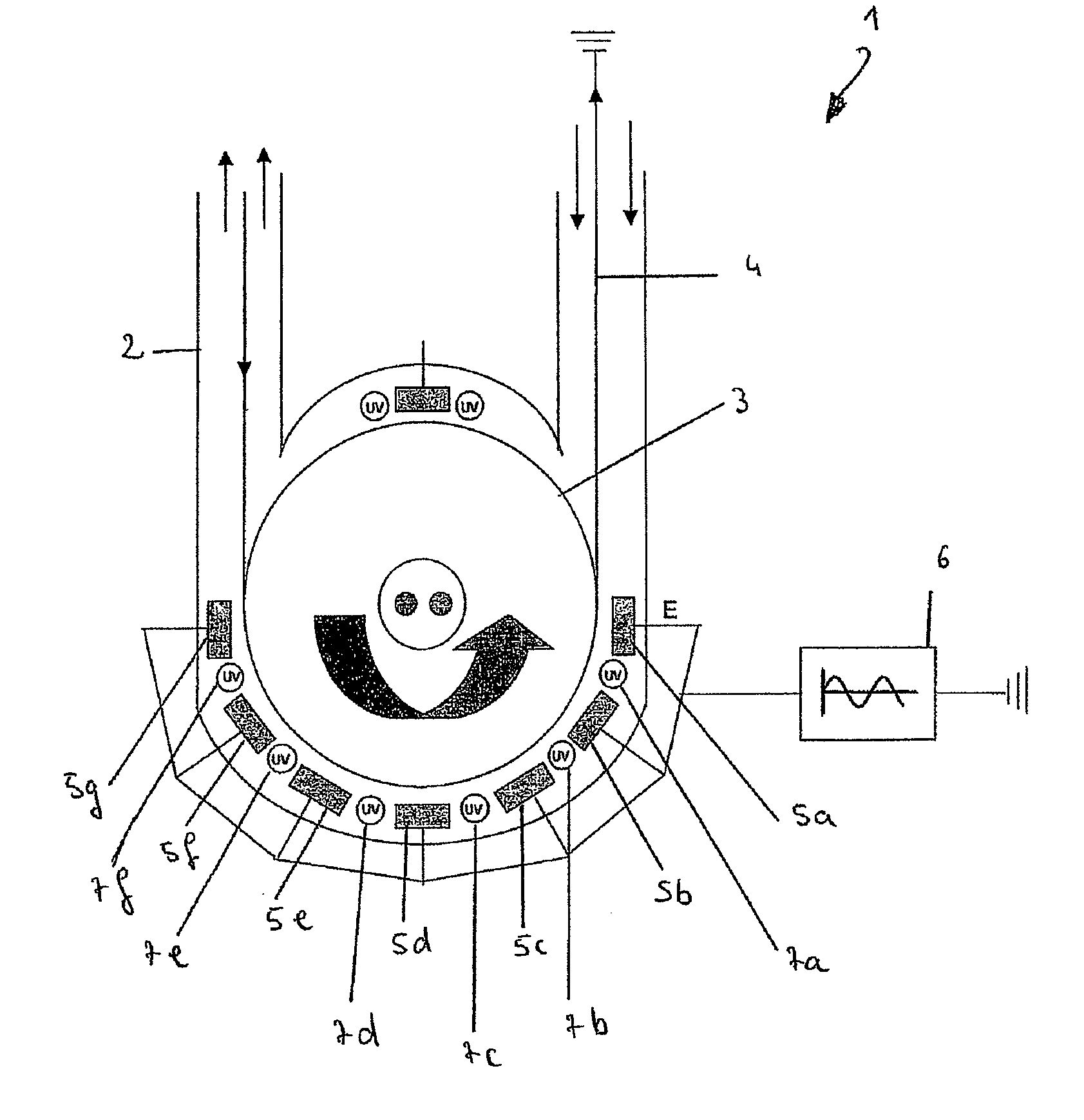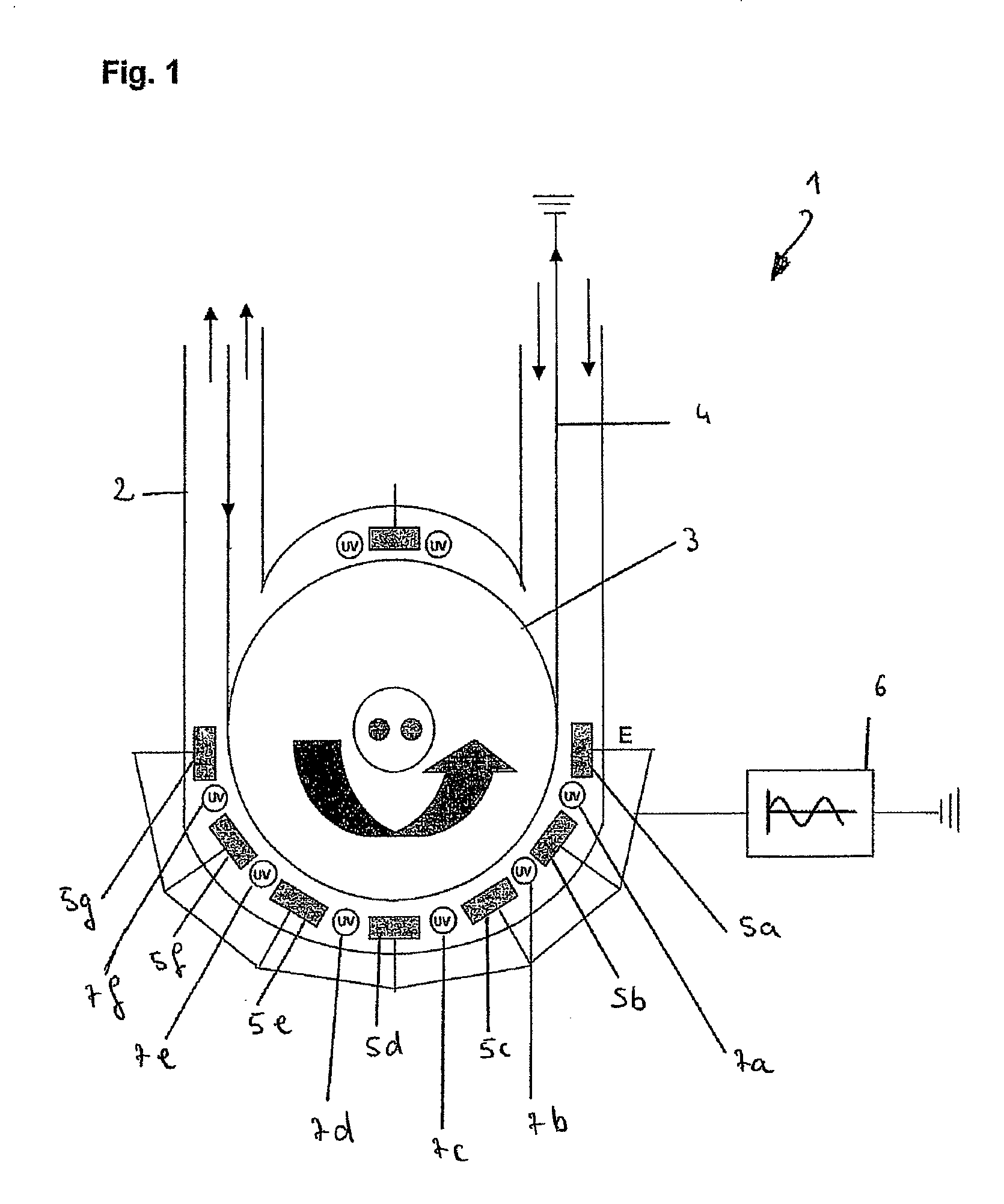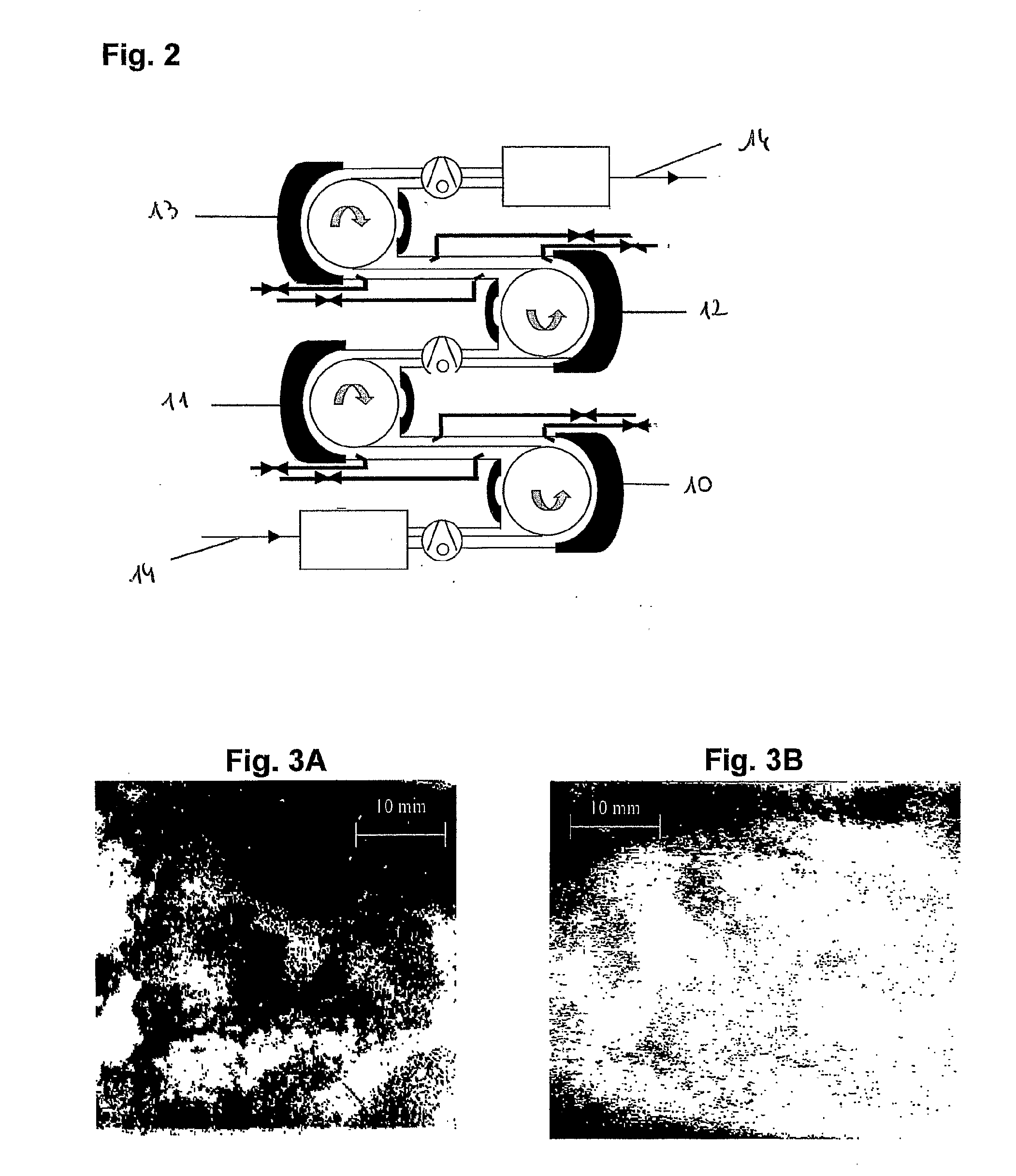Method for the plasma cleaning of the surface of a material coated with an organic substance and the installation for carrying out said method
a technology of organic substances and plasma cleaning, which is applied in the direction of plasma techniques, electric discharge tubes, chemistry apparatus and processes, etc., can solve the problems of complex ancillary workshops, low oxygen content in the mixture, and inability to treat strips at speeds exceeding 10 m/min for lack of power
- Summary
- Abstract
- Description
- Claims
- Application Information
AI Technical Summary
Benefits of technology
Problems solved by technology
Method used
Image
Examples
example 1
[0047]Two identical carbon steel strips, coated with a 186 mg / m2 protective oil layer were treated. The other parameters were identical for the two treatments, namely:[0048]200 mbar of oxygen;[0049]12 kHz sinusoidal voltage; 3.6 kV; current: 30 mA;[0050]inter-electrode distance: 5 mm.
[0051]The strip treatments illustrated in FIGS. 3A and 3B differ only by UV radiation being imposed in one case and not in the other.
[0052]FIG. 3 shows images of the surface of strips treated by a discharge initiated in just oxygen, with (FIG. 3B) and without (FIG. 3A) additional UV (253 nm) irradiation. The dark areas correspond to the non-greased regions where the oil has polymerized.
[0053]It may be seen that applying UV radiation in addition to the discharge results in less polymerization of the oil, thus allowing better cleaning, in a shorter time.
[0054]Applying UV radiation whose wavelength corresponds to the dissociative absorption of ozone results in the uniform presence of oxygen radicals on the...
example 2
[0062]FIG. 5 shows, using optical emission spectroscopy, that the density of active oxygenated species O. varies linearly with the intensity of the current applied in the discharge.
[0063]The discharge currents plotted in this figure were varied both at constant voltage, by varying the rate of application of the V, and therefore varying the impedance of the dielectric, and at constant frequency by varying the voltage. This FIG. 5 therefore shows that the density of active species depends only on the intensity of the discharge current and is not in any way influenced by the discharge voltage at constant current. This means that it is possible to obtain the same density of active species at power levels that differ only by the imposed voltage, the current remaining constant. However, it has been found that too high a voltage results in polymerization of the oil, which tends to inhibit the rate of oxidation of the organic residues present on the surface of the strip. In addition, indust...
example 3
[0066]A 20 cm2 strip covered with 186 mg / m2 of protective oil was treated by the process according to the invention. In the present case, the discharge was initiated in a stream of oxygen at a pressure of 350 mbar. The oxygen and / or ozone molecules formed from the recombined free radicals O. were not re-dissociated. FIG. 6 shows the change in coating weight of protective oil present on the strip as a function of the electron dose It / S (i.e. the electron current density multiplied by the treatment time). Application of the stream allows uniform treatment of the strip, which was confirmed by grazing-incidence infrared absorption spectroscopy (IRRAS).
[0067]FIG. 7 shows the Auger electron spectrum of the surface of the strip degreased using a discharge involving an electron dose of 21 mC / cm2. Only the iron and oxygen peaks are present. The absence of a carbon peak around 273 eV confirms that the strip was completely degreased.
PUM
| Property | Measurement | Unit |
|---|---|---|
| pressure | aaaaa | aaaaa |
| pressure | aaaaa | aaaaa |
| frequencies | aaaaa | aaaaa |
Abstract
Description
Claims
Application Information
 Login to View More
Login to View More - R&D
- Intellectual Property
- Life Sciences
- Materials
- Tech Scout
- Unparalleled Data Quality
- Higher Quality Content
- 60% Fewer Hallucinations
Browse by: Latest US Patents, China's latest patents, Technical Efficacy Thesaurus, Application Domain, Technology Topic, Popular Technical Reports.
© 2025 PatSnap. All rights reserved.Legal|Privacy policy|Modern Slavery Act Transparency Statement|Sitemap|About US| Contact US: help@patsnap.com



